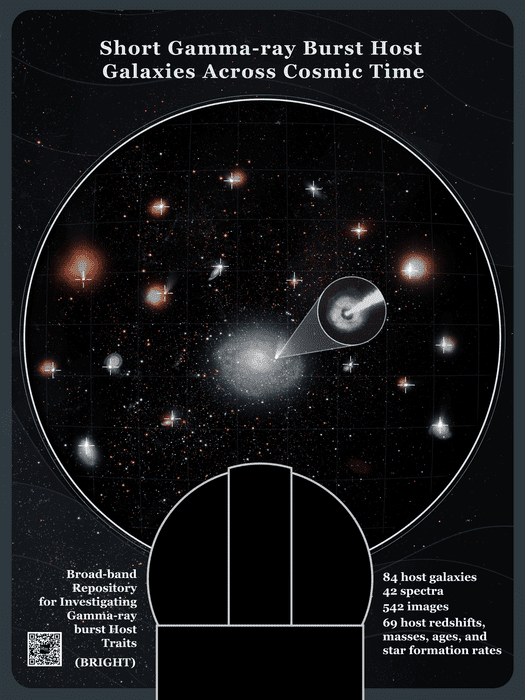
The collision of two neutron stars produces a short-lived gamma-ray burst (SGRB).
Although the gamma rays last only a few seconds, the visible afterglow will last for several hours until it diminishes below detection levels.
SGRBs are among the brightest explosions in the universe and are evidence of neutron star mergers.
However, only GRB 170817A has been shown to come from a neutron star merger.
Recently, a study published in the Astrophysical Journal established a new catalog of short-time gamma-ray burst stars.
To create this catalog, researchers used high-precision observing instruments such as the Keck Observatory, Gemini Observatory, Multi-Mirror Telescope Observatory, Large Binocular Telescope Observatory, and the Magellan Telescope at Las Campanas Observatory to obtain depth images and spectroscopic features of the SGRB host galaxy.
A new catalog was also established by combining data from the Hubble Space Telescope and the Spitzer Space Telescope.
The new catalog expands four times as much as the existing one due to the study’s in-depth examination of faintly luminous galaxies.
The catalog shows that the host galaxies of the SGRB are both young, star-forming galaxies and old, dying galaxies.
This implies that neutron star systems form in a variety of environments, with SGRBs in young galaxies likely coming from binary systems that merge rapidly at the peak of star production, and binary systems in old galaxies taking much longer to form.
Since neutron star mergers can produce heavy elements such as gold and platinum, these data could deepen researchers’ understanding of the cosmic origin of precious metals.